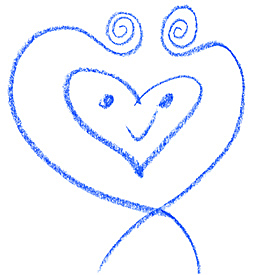The Heart’s Gift
A Never Alone Story Inspired by Ancient Wisdom
Once upon a time in a mystical, magical place there was a lake. It was a huge lake, still and beautiful and
deep. In it were many treasures and
mysteries. At first look, some seemed
scary and mysterious and menacing.
Upon a closer look, it became
apparent that there was a great root – a great stem – that emerged from the mud
under the very center of that still, deep lake.
That great, long stem bloomed into the most beautiful lotus flower that
anyone had ever seen.
When people saw that flower in a
dream, or in their mind’s eye, or in their hearts, they began to sing or dance
or hum or play. Sometimes they would run
to give someone a hug or begin to spontaneously tickle someone nearby or play
hide and seek or laugh out loud.
The flower was so beautiful some
people even cried when they saw it.
One day a swan heard about that
beautiful lotus flower and appeared on the lake to take a look. The swan and
the lotus flower were happy to see each other!
The swan’s eyes reflected the beautiful lotus flower, and the lotus
flower began to smell more wonderful than it already did. The swan wanted to share his* happiness with
someone else. She looked into the lotus flower and out came another swan,
serene and diving. “I am here with you,”
said the swan. “I have always been here
with you even when you couldn’t see me.”
The first swan was so happy and grateful, she cried tears of joy. Each swan looked into the other swan’s
eyes. They were seeing through eyes of
love.
They swam in the deep, still
lake. They drank nectar from the
beautiful lotus flower. And they looked
at each other with eyes of love.
They were never apart again. To this day, those two swans are in that lake
together.
They enjoy the lovely treasures
within the lake. Together, the treasures
aren’t scary or menacing at all. Some
things are still mysterious though.
When you are really quiet and still
and hear your heart beating and feel yourself breathing in, breathing out, you
might discover the swans’ presence and love right here, in your very own
heart.
*Pronouns include masculine and feminine deliberately, to indicate inclusivity.
Story by Rhonda Mills, Inspired by the Saundaryalahari – Verse 38
(c) All rights reserved. 2010






